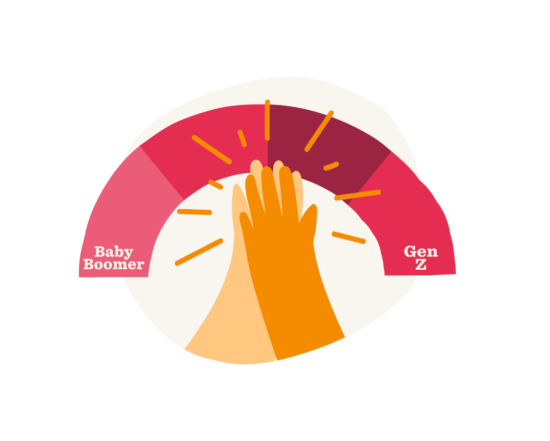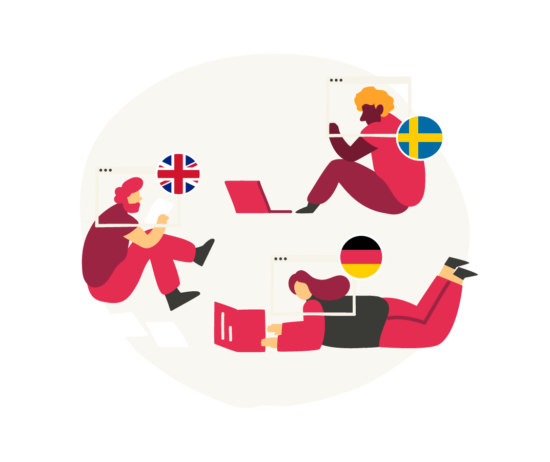Introduction
In today’s unpredictable market, anticipating and outlining the company’s and people’s needs is more essential than ever. Adaptable business strategies and agile workforces that can readily adjust to dynamic market climates and modes of working are the foundations of business resilience.
Today’s skills shortage is top of mind for business leaders everywhere, but the struggle to fill skills shortages isn’t new. Creative workforce planning is critical to succeeding in the modern business world.
Having the people you need in the right positions is the recipe for success, especially in today’s rapidly changing work world. But ensuring your company has a workforce planning process that works isn’t just the responsibility of the CPO or people leader.
Creating a workforce planning process that works for everyone across your organization takes close collaboration with other teams, especially finance. When HR and finance leadership align on budgeting, cost-to-hire, forecasting, and payroll, the workforce planning process becomes smoother and aligned with the business’s current and future needs.
The world of work is evolving. Workforce planning needs to, too.
Effective workforce planning has always needed to be flexible enough to adapt to fast-evolving business and market conditions. But due to the unprecedented shifts in today’s workforce–including the rise of freelancers and contractors, remote and hybrid work, and higher demand for upskilling by today’s professionals–modern companies must be more agile than ever.
To succeed and power through each of these challenges, there’s nothing more important than cross-team collaboration and strategy alignment. One of the most critical alliances in any company is that of the CPO and CFO.

Shared goals: Why CPOs and CFOs need to work together
While people have historically viewed CPOs as spenders and CFOs as savers–with the two functions at a budgetary impasse–this view is outdated. Both leadership roles have evolved to meet today’s workforce and business environment requirements. The result? CPOs and CFOs have a lot in common.
In a PWC survey, 37 percent of CPOs said that retaining employees was their number one priority in the next three to six months and 36 percent of CFOs were likewise concerned with retention.
In the same survey, 61 percent of CPOs said investing in technology was very important when it came to digital transformation. In comparison, 68 percent of CFOs said digital transformation topped their investment plans.
To thrive in today’s market, using outdated plans isn’t an option. Companies have gotten more creative about their workforce planning strategies. The key is incorporating HR tech with enterprise-wide data into every workforce planning strategy, employing modern workforce management tools, and (most importantly) cross-departmental business collaboration.
Today, companies face six significant challenges from the new world of work:
- The rise of freelancers and contractors
- Remote and hybrid work
- Diverse, multi-generational workforces
- Multi-national, dispersed teams
- The rise of digital communication
- Ensuring business continuity
While CFOs and CPOs may not agree on everything, their collaboration and alignment are critical to anticipating change and achieving positive business outcomes, especially in today’s ever-evolving world of work. Businesses are facing crucial people-centric issues. Together, the CPO and CFO can rethink how to allocate budgets and address these challenges.
Challenge #1: The rise of freelancers and contractors
In what became known as the Great Resignation, millions of people worldwide quit their jobs during the COVID pandemic in favor of higher-paying or more flexible positions. Millions of others leave to become freelancers or contractors. This trend is here to stay: 34 percent or more professionals earned an income from independent work in 2021 than in 2020.
Rather than see the Great Resignation as a challenge, employers can view it as a great opportunity. Leveraging freelancers and contractors can be a strategic part of budget and workforce planning, helping the company save on overhead while maintaining or even increasing output.
Here are some questions to keep in mind when discussing how freelancers and contractors can strengthen your workforce planning strategy:
- Where can freelancers and contractors fill talent gaps and help you save on budget?
- How much of the budget should be allocated per department for freelancers and contractors?
- Does the budget need to be adjusted to meet seasonal demands or specific projects that require more temporary manpower?
How can HR tech help?
Leveraging HR tech can offer deep insights into the people data companies need to make intelligent, data-driven business decisions about how to incorporate different employee types into their workforce. It can help identify gaps in the capabilities and pinpoint where and when bringing on freelancers and contractors may be the most sound business decision.
Challenge #2: Remote and hybrid work are here to stay
Even though many companies are returning to the office, many are giving their people the option to work remotely or hybrid–even if they live close to the office. In a recent study by McKinsey, 35 percent of people can work from home full-time, and 23 percent can do so part-time.
The modern professional’s desire for flexibility hasn’t dwindled. The survey also found that 87 percent of employees took the opportunity to work flexibly when companies offered that option.
Numerous studies have shown that offering workplace flexibility aids recruiting and retention. To support today’s workforce and make that flexibility a positive for everyone, companies are considering how to optimize the experience for people in each work situation and how to leverage flexible work benefits in recruitment and retention programs.
This shift from traditional, on-site work to remote and hybrid work models requires a flexible and people-first approach to budget allocation. Where traditional budgets focus on outfitting offices to serve the majority of the company’s workforce, companies today must consider how to structure a budget to accommodate hybrid and remote team members, too.
How can HR tech help?
The move to flexible work models means companies must rethink what technology and equipment people require at home and the office to communicate, boost efficiency, and support business continuity.
No matter what you discover is best for your people, crafting a flexible budget plan that provides every team member–at home or at the office–with the right environment, tools, and resources they need to engage and thrive is paramount.
HR tech solutions with integrated workforce management tools, comms, and data analytics provide a single source of truth to track productivity across dispersed teams. These solutions can also help identify which roles companies can fill with remote or hybrid team members and whether offering remote and hybrid options impacts attrition and retention.
Challenge #3: Diverse, multi-generational workforces
Flexibility at work is a benefit appreciated by the majority of today’s global workforce, with 87 percent of people reporting that if they’re offered flexible and remote working options, they take them. According to McKinsey, “[t]his dynamic is widespread across demographics, occupations, and geographies.”
Today’s businesses might employ people spanning at least four generations: Baby Boomers, Gen X, Millennials, and Gen Z.
Generational diversity is good for business success and offers opportunities for leaders to address differences. According to research by Deloitte, “high-performing teams are both cognitively and demographically diverse.” In other words, investing in a richly diverse workforce helps attract and keep the best talent out there, ultimately enhancing the company’s ROI.
Each generation of professionals has concerns influencing their engagement, availability, and performance. Likewise, the benefits people want may differ based on their stage of life. Budget planning to provide each of them with relevant benefits and work structures can take considerable effort.

For example, the Silent Generation and Baby Boomers make up 27 percent of the workforce, but as the oldest demographic, they use health care more frequently. Baby Boomers are also concerned with retirement and value retirement planning services.
Gen X tends to be concerned about their financial wellbeing, with many still repaying student loans. They also want work-life balance support, such as childcare supplements or more PTO to care for their parents.
Millennials prioritize financial stability, with a particular emphasis on support for student loan repayment. Half of millennials expect to help their aging parents financially–while also supporting their own families.
Gen Z has put a spotlight on health and companies that offer generous wellness perks. They view companies that offer perks like mental health care and shortened work weeks more favorably.
Understanding the various concerns that affect people throughout their careers and lives can help companies develop benefits packages that meet the needs of a generationally diverse workforce. And the good news is that attracting generationally diverse, multi-national workforces greatly benefits companies, too.
How can HR tech help?
Pulse surveys can help you get benefits right for individuals on your team of any generation. Many modern HR tech platforms have pulse surveys built right into the platform, allowing you to create, distribute, and analyze people’s responses in one place.
Surveys can also help you track trends quarterly or annually (or however often you prefer). Use them to keep tabs on what benefits are worth investing in and how to account for them when you plan your budget.
Challenge #4: Multi-national, dispersed teams
As more companies opt to give their people more flexibility and the option to work from home, geographic proximity to the office is not always a top criterion when it comes to adding people to the team. This flexibility also enables companies to expand globally.
The ability to recruit and hire around the world gives businesses the opportunity to find candidates with the skill sets needed, regardless of location. In fact, research from Globalization Partners and CFO Research shows that 45 percent of businesses since 2020 have expanded globally or are planning to expand. But managing multi-national, dispersed teams comes with new and complex challenges.
Global expansion requires attending to (and understanding) local compliance concerns, regulations, taxes, currencies, and culture. Every country (and state, if we’re talking about the US) has its own laws regarding benefits (parental leave, health care, etc.), time off, and more. Budgeting for it all is critical to managing a global workforce, ensuring compliance with local laws, and providing regional employees with a competitive and comfortable work environment.
How can HR tech help?
Certain modern HR tech platforms and workforce management tools can help lighten the load: Many have built-in features developed to help simplify the critical challenges multi-national companies face every day, like different currencies and local laws concerning time off, attendance, and more.
Leveraging workforce management tools can also help simplify these challenges. However, close alignment between the CFO and CPO is critical as modern, global companies plan and budget multi-national payroll, coordinate equitable benefits across dispersed teams, and ensure compliance with local laws.
Challenge #5: The rise of digital communication
Remote and hybrid work rely on technology and digital communications just as much as they rely on great HR tech to keep the business running smoothly.
Integrations with comms tools like Slack, Zoom, Google Meet, and Microsoft Teams have become invaluable. Without these tools, remote and hybrid teams simply can’t function. People couldn’t collaborate without them, and productivity would come to a standstill. But these integral comms tools aren’t cheap.

To ensure business continuity, organizations must permanently allocate parts of the budget to them. But this isn’t just for maintaining the current tools. Digital communication technology will keep developing. Very quickly, new products with enhanced capabilities will become necessities.
By permanently allocating budgets, companies can ensure their people have the communication tools they need now and in the future to guarantee global business continuity.
Challenge #6: Ensuring business continuity
Organizations today face a workforce paradigm shift, the development of entirely new business structures, and unpredictable changes in the market. Business resilience depends on the ability to pivot quickly. To do so, HR leaders and their counterparts in finance must have a solid understanding of how these fundamental changes to the business landscape affect their budgets and people today and in the future.
As the workforce becomes increasingly multi-national (and as the market becomes more unpredictable), managing the familiar human resource functions becomes progressively complex. Think about payroll, benefits, and compliance as examples.
To come out on top, CPOs and CFOs must work together to create flexible business plans with the ability to adjust to unpredictable market ups and downs–and revisit them every quarter (or more). It means building agile plans for anything from hypergrowth to sudden slow-downs, furloughing, and layoffs.
How can HR tech help?
People management can be tricky without an investment in sophisticated HR technology in a stable business environment. But in today’s world of multi-national teams and market unpredictability, HR tech is a must when it comes to handling the heavy lifting: Automated processes provide people and business leaders with data-driven insights into the organization’s needs and can help fast-track decision-making and put the right plans into action.
Recommended For Further Reading
The new normal is constant change
Change is inevitable. Success in today’s evolving market depends on people working together and investing in agile business strategies, technologies, and budgets designed to thrive on change. It’s critical to ensure your business infrastructure can support your workforce through unforeseen challenges and keep people motivated, healthy, engaged, and productive.
Aligning your people teams with your counterparts in finance is a pillar of success in the modern business world. When CPOs and CFOs work together to invest in what matters most–your people–you fortify your business against unforeseen challenges and stay one step ahead.

Meet Bob
At HiBob, we’ve built a modern HR platform designed for modern business needs—today and beyond.
An HR platform such as Bob offers a one-stop shop for all things HR. It sits at the center of your HR ecosystem, is fully customizable, and grows with your organization.
For HR, it delivers automation of many common processes, allows greater oversight and visibility of the business, and centralizes all people data in a secure, user-friendly environment.
For managers, it provides access to data and insights to help them lead more effectively and streamline processes.
For employees, it’s the tools and information they need to connect, develop, and grow throughout their journey.
In a short time, Bob can be deployed to enable communication, collaboration, and connectivity that drives stronger engagement, productivity, and business outcomes.
